February was a great month. We're really hitting our stride and Morgan is rocking her role as an agent on our team, which has freed me up to focus on sales training for Spyglass and speaking on my current passion project: helping small business owners take time for themselves.
Dynamic Selling: A Six-Week Sales Training Experience
Dynamic Selling is a program that I designed, along with Spyglass management, for our agents. The goal is to help them close more business with happier clients. Specifically, the program is focused on client enrollment and client conversion. It's all about how to take someone from the very beginning when they are considering buying or selling real estate, all the way to the closing table. I've included the most impactful lessons I've learned over the last 7 years in real estate, in the hopes that some of these agents can learn from my mistakes and be more successful faster.
We are currently three weeks into this program and it's designed to push participants out of their comfort zone. We have a rigorous amount of work between sessions, and very high-performance standards that participants must meet to graduate. What we're after here is growth, and growth is uncomfortable. When you push people to grow, there is always some resistance, even if the growth is something they desperately want. That resistance tends to show up as intense amounts of stress. So as I help my agents through these 6 weeks, I've been reflecting a lot on what stress is, and how I've learned to manage it over the years.
Mindset is the foundation of successfully managing stress. Mindset is really the foundation of everything, but that's a conversation for another day. In Week 3, we spent an entire hour just talking about stress, and the mindset shifts required to overcome it.
I spent an entire hour on various exercises with them, so I'll keep it short here. If you want to talk more, email me and I'm happy to share more tools.
The first mindset shift I suggest is to get really clear on what stress actually is. Stress is neither good nor bad, necessarily. We consider muscular stress like weight lifting which makes us stronger good. And we consider traffic stressful and bad. But stress is not inherently good or bad. It is just our body's response to taxing demands. Whether it's good or bad is determined by our stories about what's happening to us.
Some new definitions for stress that I've found helpful in my own life are these:
1. "Stress is what happens when I argue with reality." For example, "There shouldn't be traffic right now!" But there is. So to argue against the truth is futile, and stressful. Accept that you're in traffic, and that reality is just as it should be, and watch the stress disappear. (Credit: Byron Katie)
2. "Stress is not about what happens to us. It's about our stories about what happens to us." Often, when I find myself stressed out if I stop and ask "What's the story I'm telling myself about this?" (Credit: Brene Brown). I'll find that it's the story, not the event, that is causing me stress. And that the story is 100% fabricated.
For example, here's a minor event that many agents magnify into a major, stressful story (and I've been there myself): My client just called me twice, and it means that they're annoyed with me. They're annoyed because they don't think I'm doing a good job. Maybe I'm not doing a good job. Maybe I'm not a good agent... And the story spins into some crazy negative conclusion. When in fact they just pocket dialed you. If you can catch the story, you can usually end, or significantly reduce, the stress.
All of this is just a fancy, new-age, woo-woo way of saying what Mark Twain (might have) said 100 years ago.
I am an old man and have known a great many troubles, but most of them never happened.
In short, "I'm so stressed out!" is really just a story.
Speaking: Hero Nation Mastermind in Dallas
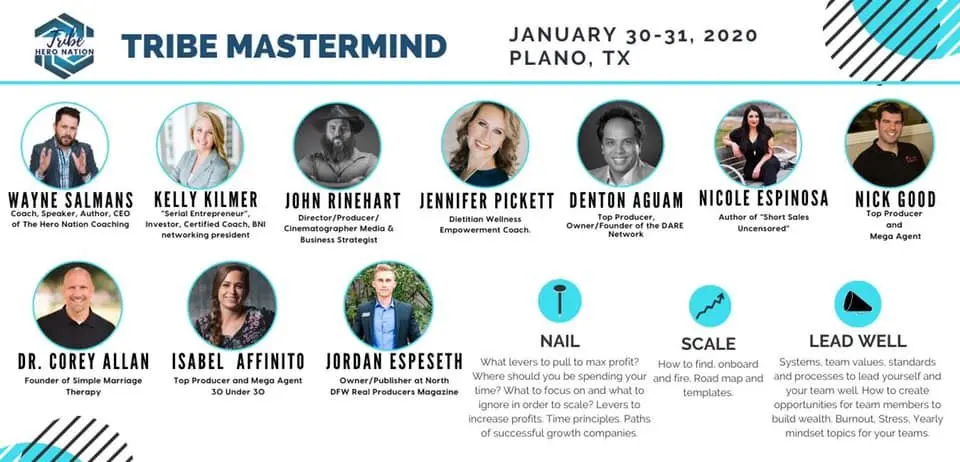
Hero Nation is a business coaching group I've had the pleasure of being part of for the past year. I had the opportunity in February to head to Dallas and speak about "Stress Less, Vacation More: How to be Epically Efficient." Can you tell I'm on a stress-reduction crusade right now?
The reason why I chose to speak about this particular topic is that I'm finding that small business owners do not take time off. When I speak to real estate agents and other client-facing small business owners, I find that they typically will work seven days a week. They're working nights and weekends, they're working on their vacations and they're not really taking time away from their business. There are plenty of people who will tell you that working like this is how you build a business. And trust me, I'm no stranger to hard work. And I've also learned that sustaining high performance requires rest time. As soon as I began to really see the benefits of rest for myself, I want to help small business owners figure out how to make that happen.
There were several other fantastic speakers whose talks inspired me, and I'm still unpacking everything I learned. I have incorporated several lessons from the mastermind into the Dynamic Selling Program I mentioned above.
The lesson that really stuck with me was about the emotional cycle of change. I presented this graphic in Week 1 of the Dynamic Selling Program to prepare agents for the emotional, mental and psychological challenges they were volunteering themselves for. Because change always sounds fun, until you start to do the work. And I've never heard that reality explained more clearly than it was in Dallas by Nick Good.
In Nick's talk, he mentioned that everyone in his company is trained on this idea: That there is an emotional cycle of change, and it's not easy. They're so trained on this, that they'll come to him and say "Nick, I think I'm in Phase 2" and everyone knows what that means.
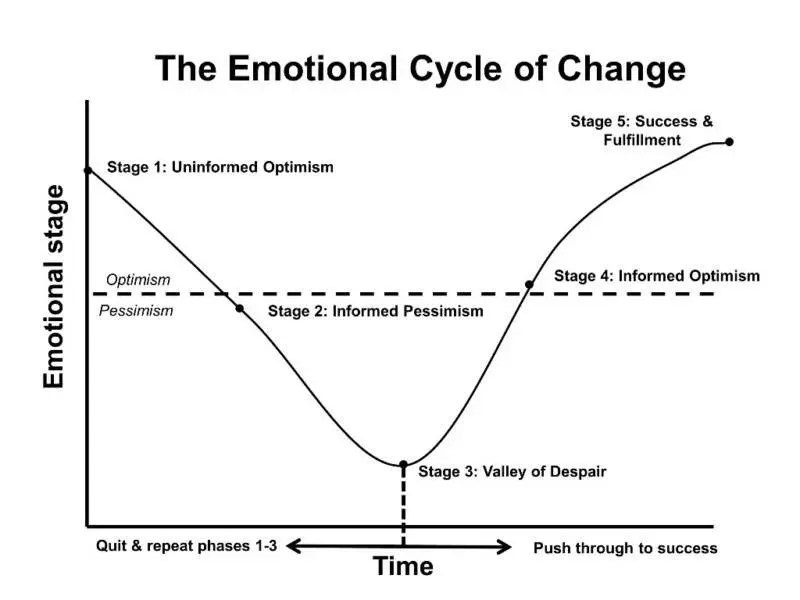
So here's the breakdown:
Phase 1: Uninformed Optimism "This is going to be great!" You desire the change, and see all the wonderful potential, but have not yet encountered any of the down-sides.
Phase 2: Informed Pessimism "Maybe this isn't as great as I thought. It's actually kind of hard. Do I really want this?" Things get hard, and realities are start to set in.
Phase 3: The Valley of Despair "This isn't at all what I thought. In fact, this is really hard. I'm not sure I'm cut out for this. Maybe this isn't for me." In this phase, you're in a bad place. You seriously consider quitting. If you do quit, you'll begin the cycle again with your new job, new diet, new business, new romantic relationship, or new whatever. But if you push through, you'll proceed to...
Sign Up for free Get the first to receive the latest listing updates, save favorites & much more by signing up.
If you already have in account, SIGN IN.
Phase 4: Informed Optimism "Okay, I think I'm starting to get this." You've survived the Valley of Despair, and you begin to see some of the benefits of change. You will either plateau here because you're exhausted from the Valley of Despair, or you'll put your foot on the gas and proceed to...
Phase 5: Success and Fulfillment
I presented this in Week 1 of Dynamic Selling in the hopes that knowing the Valley of Despair was part of the deal would encourage agents to push through it. Many of the agents have come to me and said either that they were in the Valley, or just climbed out of the Valley, so I guess the idea stuck. Knowing this is how change works seem to help people make sense of the suffering, but the jury is still out on whether you actually suffer any less. Growth hurts, people.
Okay, enough about self-help. Let's talk about real estate.
Closings
Shannon and Koji: Shannon was Morgan's sorority sister at A&M. She ran into her, and her fiance, Koji, at an Open House this fall. We put a couple of offers in before we landed their dream condo in the up and coming neighborhood around Montopolis. This is their first home together and they couldn't be more excited about it!
Listings
11008 Twisted Elm Drive

Coming soon to the market is this 4 bed, 2.5 bath house in 78726. It's near Four Points, River Place, and the intersection of 620 and 2222. Asking $576,700, this home has a large yard for the neighborhood and backs to green space. We will have professional photos in a few weeks. If you'd like to see them before this home hits the MLS in late March, follow us on Instagram: @FunkyHomesOfAustin or email us at isabel@spyglassrealty.com.
3033 Silvergrass Cv.
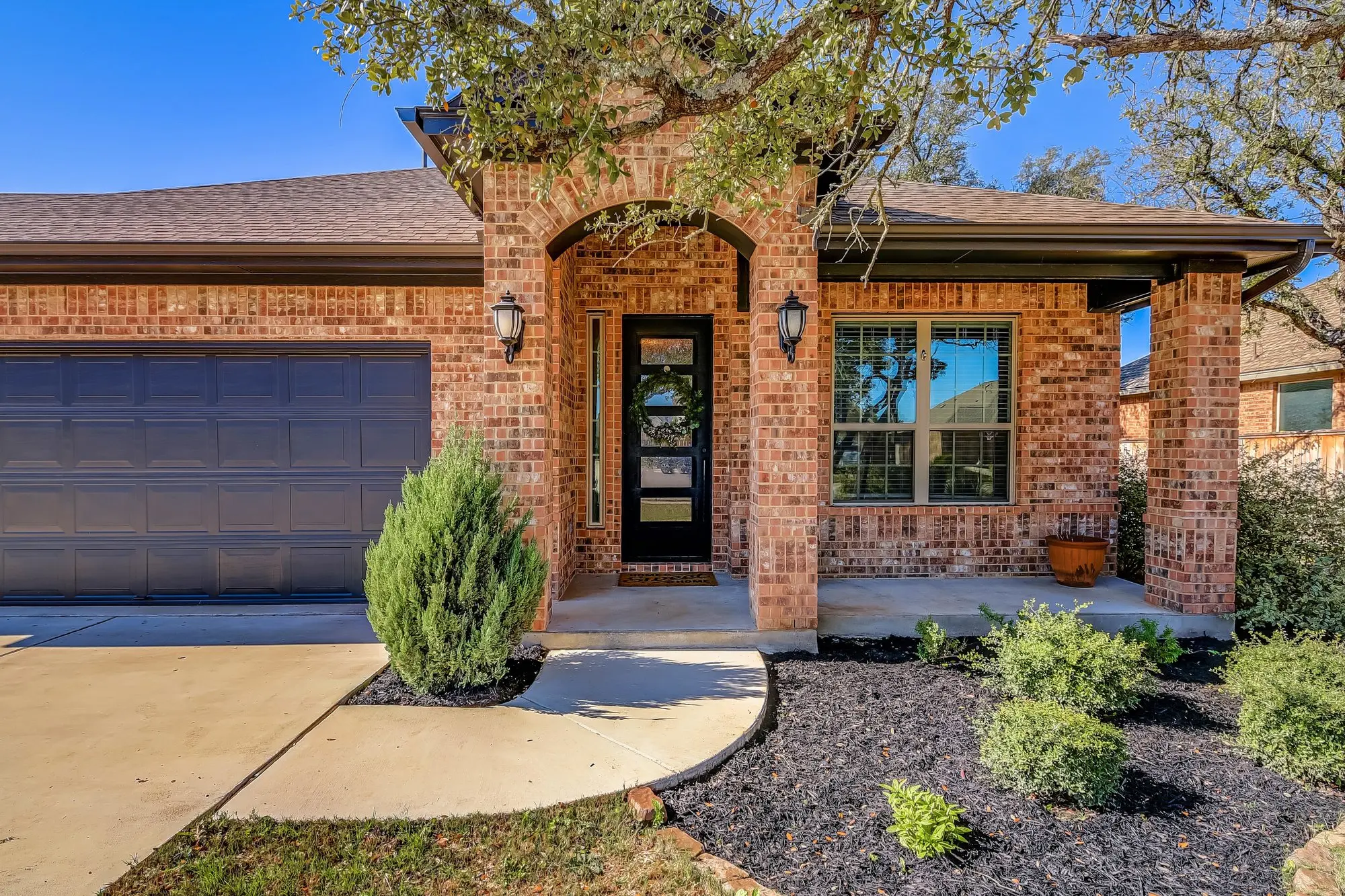


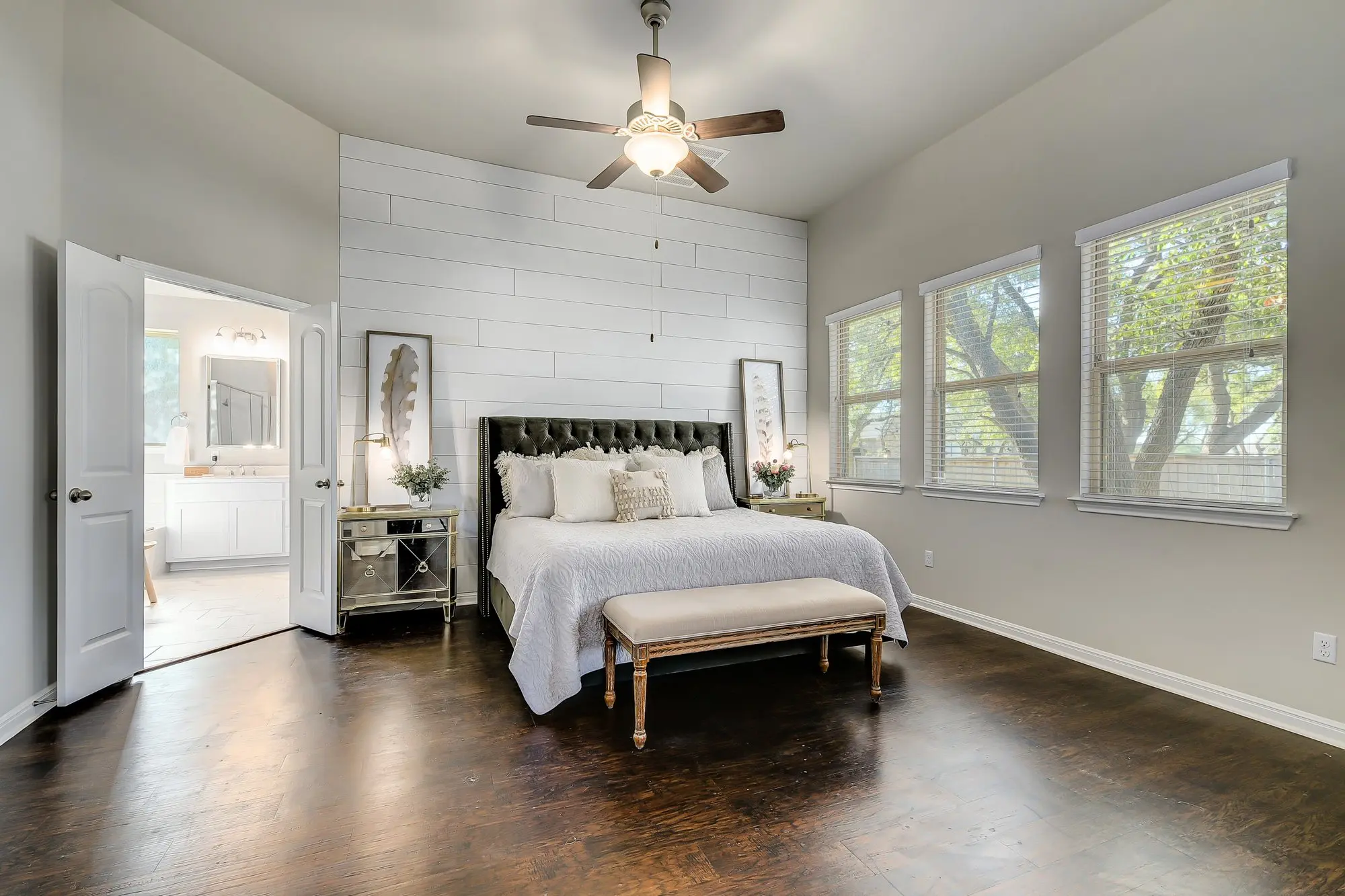
We listed 3033 Silvergrass in early February for our long-time clients Rick and Amy. I met Rick and Amy almost 5 years ago at an open house, and we've stayed in touch ever since. They were ready to move on from the home they purchased with my help in Crystal Falls a few years ago, and are headed for a new home in Dripping Springs next. This gorgeous home in Crystal Falls sold FAST during the first weekend, due to a solid pricing strategy and Amy's impeccable design taste (Rick, I know you helped, too). We managed a very competitive multiple offer situations and accepted a strong offer after the first weekend on the market, well over asking price and with great terms. We're set to close next week.
Urban ATX

Urban ATX had its first closing of the year at the 301 Woodward Unit B property. There are four units total at Woodward, with one under contract, leaving two more available. We have had lots of activity and expect to have them all sold soon. These units are located across from St. Edward's school and boast high ceilings, tons of natural light and cool colors throughout the home.
In Conclusion...
Happy March everyone! We love to hear from you, so drop me an email at isabel@spyglassrealty.com and say hello.
And lookout for the March newsletter in a few weeks which will include a picture of Chris hanging upside down in an aerial yoga class. No, I'm not kidding. I was shocked, too.
Leave A Comment